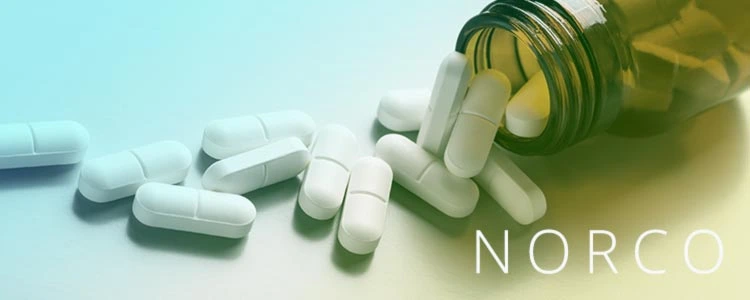Norco Addiction

Norco is a prescription painkiller similar to Vicodin. Its active ingredients are acetaminophen and hydrocodone, but Norco differs from Vicodin in that it has a higher amount of hydrocodone. It is intended to be used on a short-term basis. However, an estimated 2.1 million people in the United States abuse opioid medications. Addiction to and abuse of painkiller medications is common, so one must be aware of side effects and Norco addiction warning signs when starting this medication. Long- and short-term side effects can be severe, so it is important to seek help as soon as a Norco addiction is suspected. Early intervention can curb the most severe symptoms and consequences.
Norco Addiction Symptoms
If a person is addicted to a prescription painkiller like Norco, there will be changes in their behavior that can be difficult to identify. However, if you know what to look out for, addiction can be spotted more easily. A person abusing Norco will likely take the drug without a prescription or take more of the drug than their prescription instructs. You may notice them visiting several doctors in an effort to obtain more Norco. A person can become obsessed with obtaining the drug and may display changes in personality such as increased irritability or uncharacteristic bouts of anger. Mixing Norco with other substances, which increases the effect of the high, is not only dangerous but a strong indicator of addiction. In addition to the personal and social signs, a person can experience physical Norco addiction symptoms, which include:
- Drowsiness
- Withdrawal from social activities
- Constricted pupils
- Rash
- Slowed or shallow breathing
Norco addiction can be broken into three stages. A person starts out using the substance recreationally. This is the period of time when they demonstrate drug-seeking behaviors and feel euphoric after using Norco. After this stage, dependence develops. A person becomes zombie-like because of the drug use and needs more Norco to achieve the high they’re seeking. They may start hiding their drug use during this time. After dependence, addiction follows. Norco becomes the individual’s number one priority. They will feel unable to stop using, they might struggle financially due to money spent on the drug, and they might be defensive when confronted about their Norco use.
Find a Norco Rehab Center
If you or a loved one is facing Norco addiction, it may feel like there is no clear path to sobriety. Take the first step and call BetterAddictionCare for help finding the addiction recovery program that is the best fit for you. Recovery is a personal experience, and we believe you deserve the very best care for your greatest chance at long-term success.
Speak with one of our friendly client care specialists and we will create a personalized plan for you based on your insurance and needs. We can find a comfortable, safe addiction recovery center near you.
There is a path to sobriety, and you don’t have to travel it alone. Call now or fill out a contact form to get help now and start healing.
Resources
Treatment Centers in Virginia




